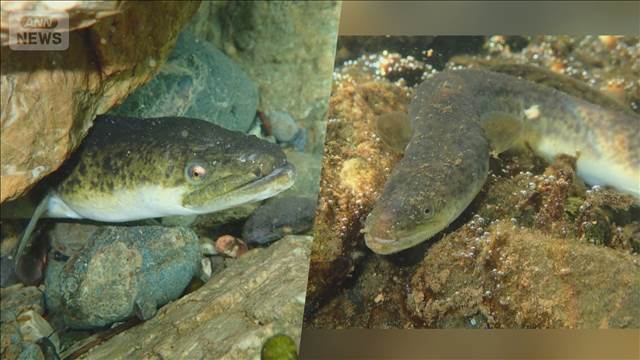
When you buy through links on our articles, Future and its syndication partners may earn a commission.

Europe's Ariane 6 heavy-lift rocket took to the skies for the fourth time ever today (Nov. 4).
An Ariane 6 lifted off from Europe's Spaceport in Kourou, French Guiana today at 4:02 p.m. EST (2102 GMT; 6:02 p.m. local time in Kourou), carrying the Sentinel-1D Earth-observation satellite to low Earth orbit (LEO).
The Ariane 6 deployed Sentinel-1D about 33.5 minutes after liftoff today as planned, at an altitude of 440 miles (708 kilometers).

The Ariane 6 is the successor to the Ariane 5, which retired in July 2023 after 27 years of service. The new rocket debuted with a checkered July 2024 test flight, then followed that up with two fully successful operational launches, in March and August of this year.
Ariane 6 made it three in a row today with the launch of Sentinel-1D, which is part of the European Union's Copernicus Earth-observation program.
The Sentinel-1 series of satellites capture detailed radar imagery of Earth, "performing in all weathers, day and night," European Space Agency (ESA) officials wrote in a Sentinel-1D mission description. "This service is vital for disaster response teams, environmental agencies, maritime authorities, climate scientists — and other users who depend on frequent updates of critical data."
Three Sentinel-1 satellites had launched before today, and two of those remain operational (Sentinel-1A and Sentinel-1C). Sentinel-1D will replace Sentinel-1A, which has been eyeing Earth from orbit for 11 years — well beyond its planned operational lifetime, according to ESA.
"The Sentinel-1D satellite will work in tandem with Sentinel-1C to generate timely data," agency officials wrote in the description. "Both satellites have a C-band synthetic aperture radar (SAR) instrument on board, which captures high-resolution imagery of Earth's surface. They are also equipped with Automatic Identification System (AIS) instruments to improve detection and tracking of ships."

Today's launch was Europe's fifth orbital mission of 2025. In addition to the three Ariane 6 flights, the Vega C smallsat launcher — which, like the Arianespace, is operated by the France-based company Arianespace — has aced two missions so far this year, in April and July.
For context, SpaceX has launched 140 missions of its workhorse Falcon 9 rocket in 2025. More than 70% of those flights have been devoted to building out the company's Starlink megaconstellation in LEO.
Editor's note: This story was updated at 1:14 p.m. ET on Nov. 5 with news of successful liftoff, then again at 1:39 p.m. ET with news of satellite deployment.
latest_posts
- 1
 The Job of Attorneys: It is Important to Comprehend When Legitimate Help
The Job of Attorneys: It is Important to Comprehend When Legitimate Help - 2
 Most loved Caf\u00e9 Chain: Where Do You Get Your Caffeine Fix
Most loved Caf\u00e9 Chain: Where Do You Get Your Caffeine Fix - 3
 Tech Patterns: Devices That Will Shape What's to come
Tech Patterns: Devices That Will Shape What's to come - 4
 European Travel Objections for 2024
European Travel Objections for 2024 - 5
 Purdue Pharma's deal means money for some victims, end of Purdue company name. Here's what to know
Purdue Pharma's deal means money for some victims, end of Purdue company name. Here's what to know
 オオウナギが陸上でも狩り 東京大学など研究チーム明らかに コオロギ捕食(テレビ朝日系(ANN))
オオウナギが陸上でも狩り 東京大学など研究チーム明らかに コオロギ捕食(テレビ朝日系(ANN)) Best bar-b-que Style: Which One Is Your Number one?
Best bar-b-que Style: Which One Is Your Number one? Becoming amazing at Systems administration: Individual and Expert Tips
Becoming amazing at Systems administration: Individual and Expert Tips Style Narratives: A Survey of \Patterns and Styles Assessed\ Design
Style Narratives: A Survey of \Patterns and Styles Assessed\ Design A definitive Handbook for Securities exchange Money management
A definitive Handbook for Securities exchange Money management Unwinding History's Secrets: Looking for the Response to Antiquated Human advancements
Unwinding History's Secrets: Looking for the Response to Antiquated Human advancements The Main 15 Applications for Efficiency and Association
The Main 15 Applications for Efficiency and Association 5 Worldwide Road Food sources You Should Attempt
5 Worldwide Road Food sources You Should Attempt A decade after Brazil’s deadly dam collapse, Indigenous peoples demand justice on the eve of COP30
A decade after Brazil’s deadly dam collapse, Indigenous peoples demand justice on the eve of COP30













